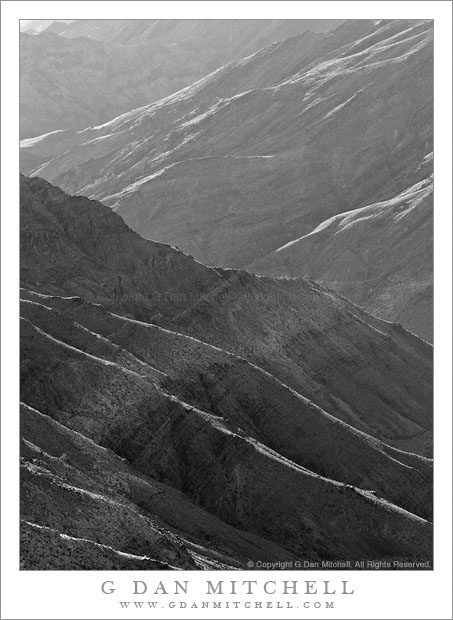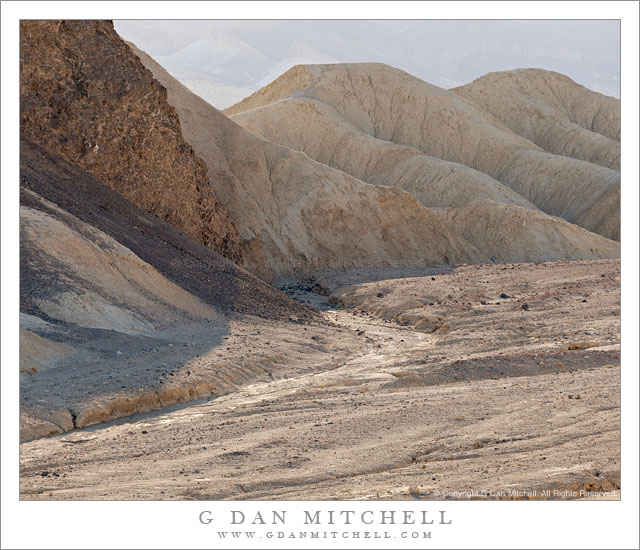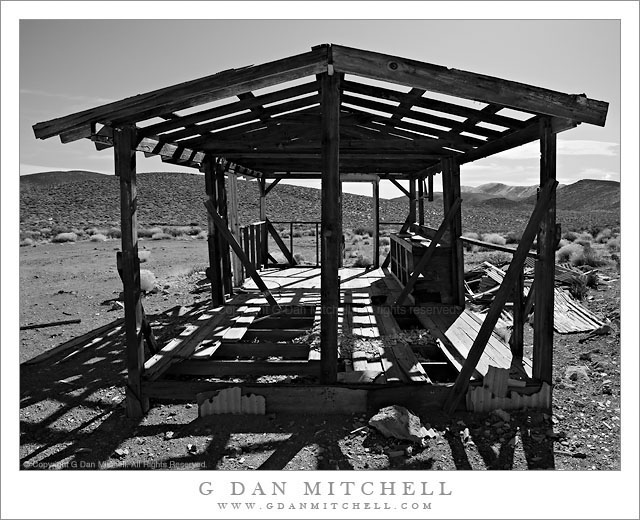Dead Tree and Sandstone Cliff. Zion National Park, Utah. April 3, 2012. © Copyright 2012 G Dan Mitchell – all rights reserved.
A dead tree stands in front of a sandstone cliff, Zion National Park.
Along the Mt. Carmel Road through Zion National Park, the higher elevation areas tend to feature a lot of lighter color sandstone, which I understand may be the remnants of ancient sand dunes. For the most part, these formations tend to be lighter in color than the strikingly red tones of the sandstone cliffs found lower in the park, in the Zion Canyon of the Virgin River for example. These “highland” rock formations have their own appeal, including a wide variety of patterns including beautiful curving shapes.
But that isn’t what you see in this photograph, even though I made it in the highland area. As we rounded a turn at one point, ahead of us and then to the right was a very large and close cliff of red sandstone, and it was still in the afternoon shade. I like shade! Not only that, but in front of this cliff were several large trees that were not only out of the shade but which were also backlit. I like back-light! So we stopped and I photographed those trees. But as I worked on them I also noticed this skeletal and very deal old snag of to one side. I like old snags! Because the rock was in the shade yet lit by reflections from across the canyon, the red tones of the sandstone were intensified. There were a couple of challenges with this scene. The overall luminosity range is not great, the colors are all affected by the reddish glow from the cliff and the light from across the small canyon, and the tonal level of the tree is not that different from that of the rocks. In order to get the tree to stand out at least a bit against the rocks (something that was more obvious on the scene and looking at it in 3D) some work was necessary in post, especially some fine work on the tree itself.
G Dan Mitchell is a California photographer whose subjects include the Pacific coast, redwood forests, central California oak/grasslands, the Sierra Nevada, California deserts, urban landscapes, night photography, and more.
Blog | About | Flickr | Twitter | Facebook | Google+ | 500px.com | LinkedIn | Email
Text, photographs, and other media are © Copyright G Dan Mitchell (or others when indicated) and are not in the public domain and may not be used on websites, blogs, or in other media without advance permission from G Dan Mitchell.




